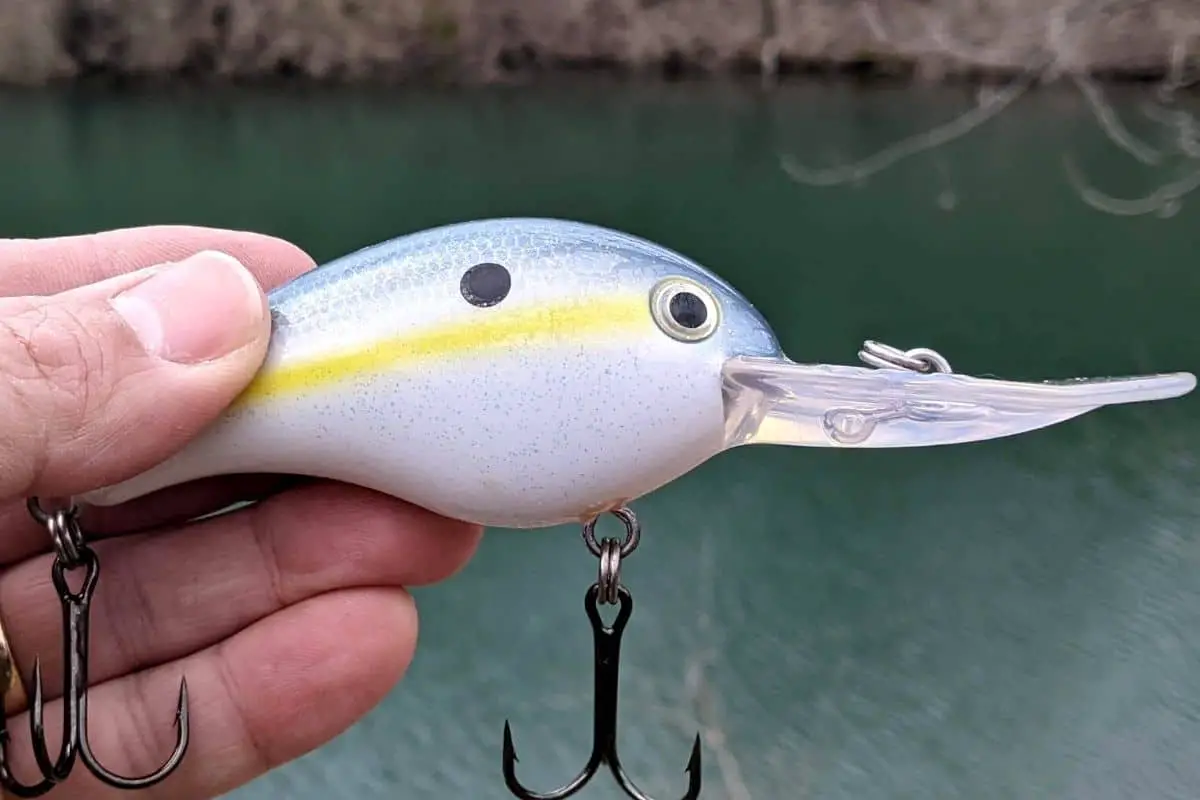Crankbaits are a staple for bass professionals at all levels. And for good reason.
Crankbaits should be used when anglers want to locate bass or target larger bass. Crankbaits are also excellent lures for finding schools of bass sitting offshore.
Understanding what a crankbait does well will help you decide when to use one.
Crankbaits Cover Water to Find Bass
Each day on the water starts with the same goal – locate bass.
There are lures and presentations that do this better than others. A crankbait is one of those presentations that I like to categorize as horizontal. In other words, it is constantly moving parallel to the lake or river bed.
This is very different from a presentation like pitching or flipping a jig to specific targets.
A good crankbait angler can decipher bottom composition and figure out where bass are located.
Different sizes of lures can be used to probe different depths.
Serious crankbait anglers work towards a collection of lures that cover the entire water column from shallow-to-deep. Having the option to pick a new lure to target a different depth helps us to efficiently cover the situation we are dealing with.
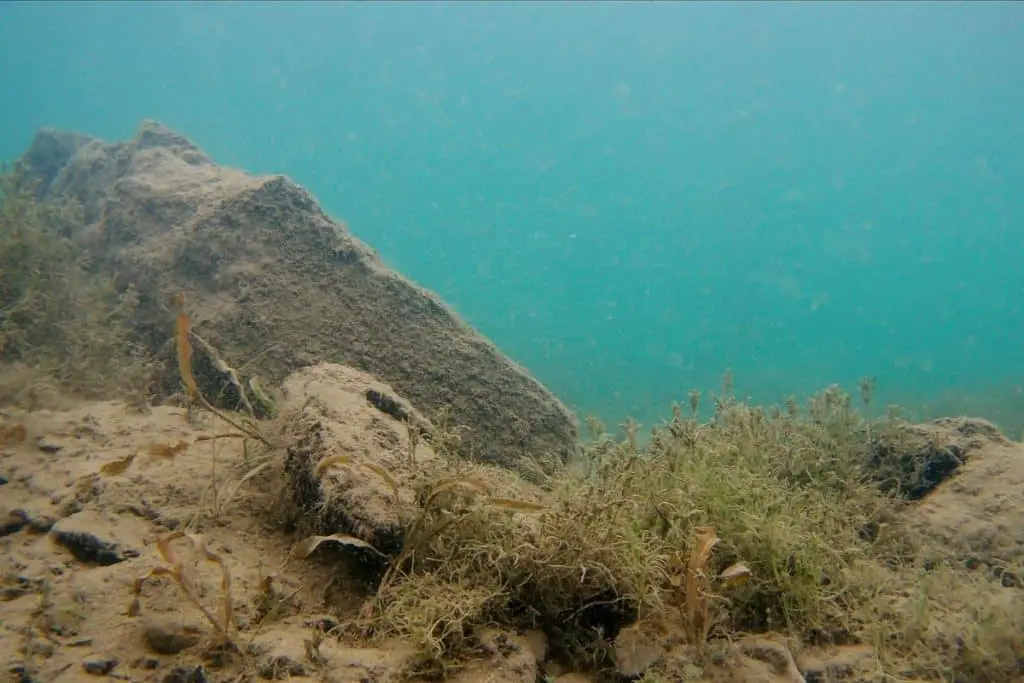
Reaction Bites and Crankbaits
It is important to understand that bass are either actively feeding or they’re not – and most of the time they are not.
When our favorite gamefish is aggressively searching for food, the entire playbook of lures and presentations becomes much easier to decipher. Anglers can often get away with mistakes not normally acceptable.
These times are few and far between.
Most often, bass are in a loafing mood. They can be seen with huge schools of prey species and not interested in eating at all.
This is where reaction strikes come in.
Basically, a reaction strike is when the angler causes the bass to react – or eat – when it doesn’t want to.
Think about it like this.
If I came up to you and started flicking my hands in your face, odds are you are going to react. Most likely, you will swat my hands away.
This is the same thing a bass will do, but their only option is to attack or flee.
The one common factor with all crankbaits is they perform best when hitting something. The lure is most effective when banging and bouncing off of stuff. This can be hard bottom composition or something like submerged timber.
When a crankbait deflects off cover at a random pattern, it initiates this reaction in the bass.
Crankbaits for Shallow Water
Shallow water cranking is quite different than probing the depths.
Many of the lures that work in 8 ft of water or less are squarebills. These lures are designed to bang, bounce, and rip through the various forms of cover and structure that can be found at these depths.
Squarebills, like deep divers, come in a range of sizes that provide anglers with different depth options as well as profiles to better match prey species.
Experimenting with lure body size can have an immediate impact on the quality of bass caught. For example, the Strike King KVD 1.5 and 2.5 target the same depth zone, but there is a significant profile difference. There have been times when making the switch to one or the other produces many more bites and quality fish.
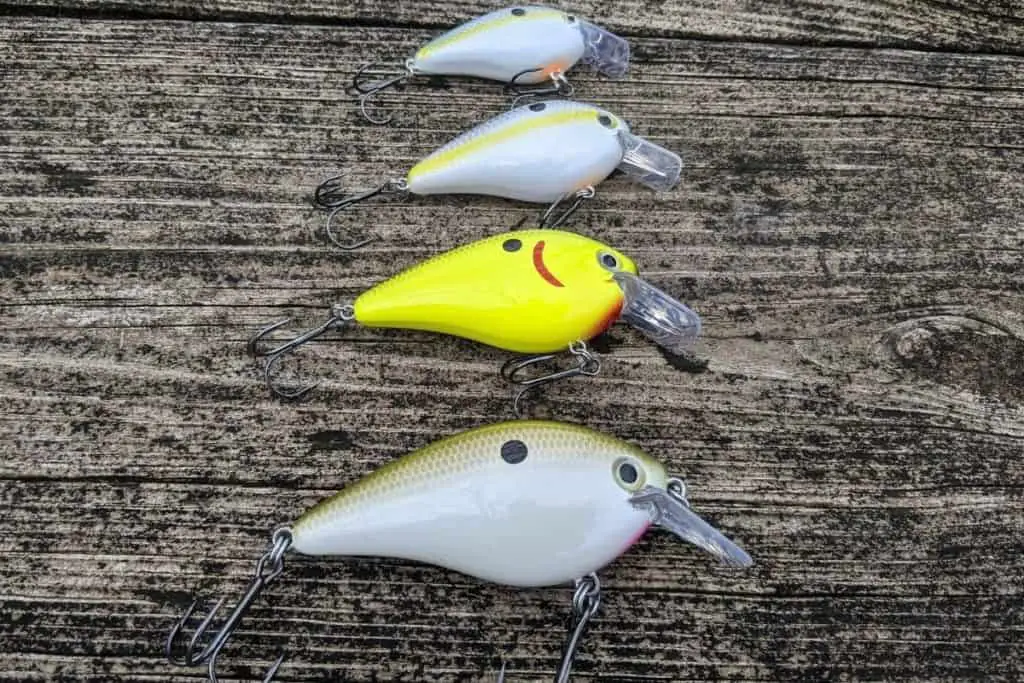
Burning Squarebills for Reaction Bites
Unlike deep diving crankbaits, squarebills are masters of burning through the water.
This is one lure that you can literally reel as fast as you can and receive some vicious strikes. It feels weird bringing a lure through the water that fast – but it works.
Of course, the lure can also be crawled and bounced around hard objects, but don’t overlook the power of burning squarebills. This technique has caught fish for me when other presentations go untouched.
I prefer to use a start and stop retrieve when burning squarebills. I find that I get more strikes with this erratic cadence. This is also effective when bringing the lure through open water and there is nothing to bounce into.
Rick Clunn, a bass fishing legend, has been burning squarebills for decades. He sticks the rod handle into his side and cranks away. It is exhausting but very effective.
Deep Diving Crankbaits and What to Look For
Fishing hard structure is a crankbait angler’s dream situation.
The bill of the lure deflects and bounces off of rocks well. When the lure comes through the water nose down the bill protects the treble hooks from hanging up. It grinds its way across hard bottom composition better than most other lures and presentations.
Deep diving crankbaits are also tools I use when fishing ledges. Submerged creek channels are magnets for schooling bass.
A deep diver worked along these edges can find how and where these offshore bass are positioned.
It can take lots of time to locate the key spot, but once you do, anglers can literally catch bass on every cast for a while. The first time I experienced this I was forever hooked on deep divers.
Deep divers are not as good on waters with a soft or mushy lakebed. In these situations, the bill of the lure will often dig too deep into the muck and the hooks will foul with debris like old leaves and grass.
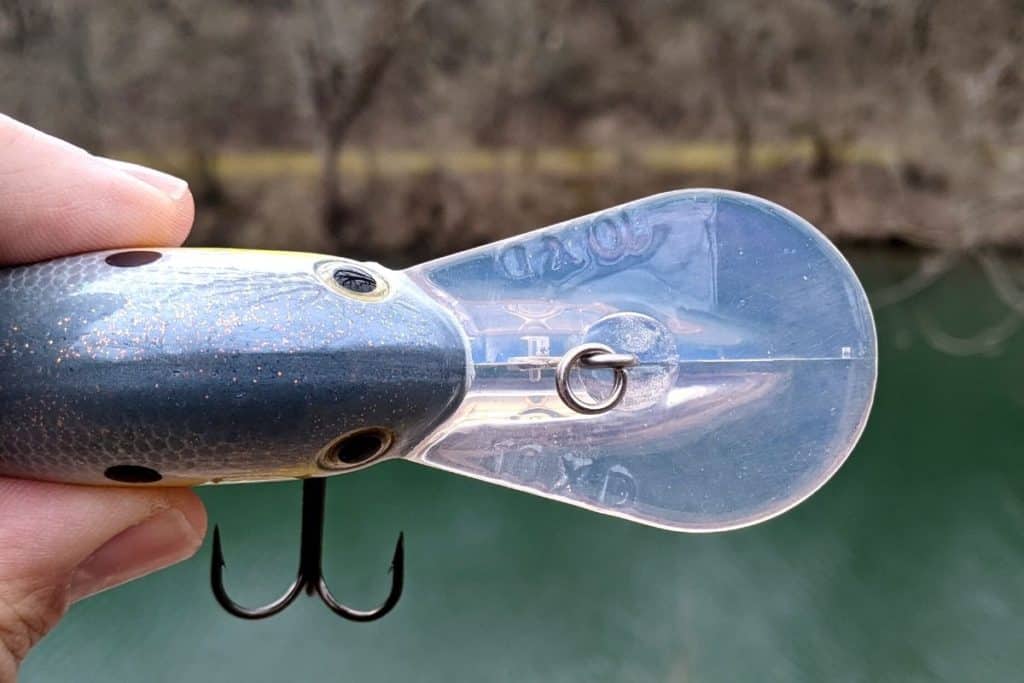
Deep Diving Crankbaits and Retrieve Speed
An important aspect of fishing deep-diving crankbaits is the retrieve speed.
These lures do best when brought back slower than their squarebill cousins. David Fritts, one of the most notable professional crankbait anglers, talks about 21” of line recovery per turn.
That is slow.
Today’s high-speed reels bring in much more line than that. To slow yourself down I suggest finding a reel in the 5.2:1 gear ratio.
A deep-diving crankbait runs more efficiently and gets to depth quicker when reeled slower.
(Here is a more in-depth article on crankbait speed.)
When to Use Lipless Crankbaits
These lures fall into a category all their own.
The design and retrieve style of lipless crankbaits make them deserving of their own section.
First, when and where should we throw them?
Lipless crankbaits do two things well – rip the tops of vegetation and draw strikes while fluttering to the lake or river bed.
(Here is an article that goes into more depth about lipless crankbaits.)
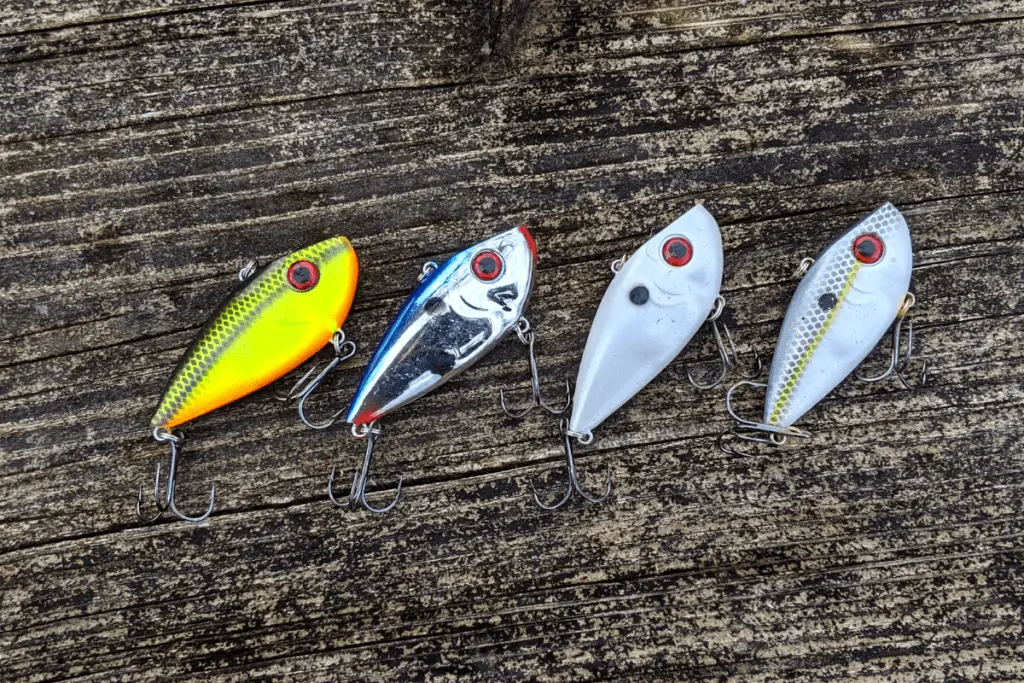
Vegetation and Lipless Crankbaits
If the waters you fish have healthy weedbeds or grass flats, a lipless crankbait can be a fun and efficient way to draw bass to strike.
Depending on the depth of the vegetation, you may have to change sizes. The goal is to let the lure tick the top of the vegetation and then rip it free. We don’t want the lure to bury deep in the grass and then get hung to the point we are pulling a giant ball of vegetation back to us.
Using a lighter lure, like a 1/4oz, is a great way to start utilizing this technique.
The bites often happen when the lure pops or rips free from the grass.
Lipless Crankbaits and a Fluttering Retrieve
If the water you are fishing has a lake or river bed that is free from thick weeds and endless wood, then this retrieve can be magical.
I like this method best when fishing a harder bottom composition, but it will work with a mucky lake bed as well.
Think about the retrieve the same way you would hopping a jig.
Rip the lipless crankbait off the bottom, and then let it drop on a slack line.
The design of the lure creates a unique fluttering action – very similar to a flutter spoon.
Once the lure hits bottom, pop it and repeat the process. I like to use small hops, but there are days when the bass respond better to larger hops. Experiment and find what the fish are reacting to.
Using Crankbaits Throughout the Year
Crankbaits can be used throughout most of the year.
I don’t tie them on in the dead of winter when the water is in the low 40s, but any other time is perfect.
In cooler waters, tight wobbling lures get the nod and I will use wider wobbles as the water warms up.
I always think about these lures with a search, search, search – catch mindset. The idea is to cover water and find how bass are positioned and where they are sitting.
To be a successful crankbait angler means collecting a lot of lures in a variety of sizes and depths. It can be overwhelming at first, but building the collection over time is the best way to go about it.
For example. The waters you fish most may have a maximum depth of 10ft. Build a collection of lures that will work up to that depth.
Good luck out there and make sure to encourage someone today. You never know how you may change their life forever.
Isaiah 6:8

